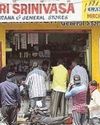
India is pushing for adoption of clean and efficient energy sources and end-use technologies at the household level. The Saubhagya scheme has extended electricity connections to 26 million homes and Ujjwala has provided 75 million LPG connections. Significant efforts are also being made to increase awareness and adoption of LED bulbs, energy efficient appliances, electric vehicles, and rooftop solar.
These efforts along with increase in incomes, urbanisation, and rapid advances in technology are expected to change the household energy consumption patterns substantially. It is crucial to study these emerging patterns to chart policies aimed at influencing demand as well as planning of resources required to meet the demand.
However, there is very little information on how people use energy in their homes in India. A detailed residential energy consumption survey of 3,000 semi-urban and rural households of Uttar Pradesh (UP) and Maharashtra (MH) by Prayas (Energy Group) gives some insights that can potentially inform policy decisions. We briefly describe three key insights.
Duration of electricity supply is the most important factor to allow meaningful use of appliances. Households reported about 15 hours of average daily supply in UP and 22 in MH. Further, about 47 per cent of surveyed households in UP and 6 per cent in MH reported damage to appliances due to poor power supply quality. Issues with quality of electricity supply should be addressed in both States, more so in UP.
この記事は The Hindu Business Line の October 31, 2019 版に掲載されています。
7 日間の Magzter GOLD 無料トライアルを開始して、何千もの厳選されたプレミアム ストーリー、9,000 以上の雑誌や新聞にアクセスしてください。
すでに購読者です ? サインイン
この記事は The Hindu Business Line の October 31, 2019 版に掲載されています。
7 日間の Magzter GOLD 無料トライアルを開始して、何千もの厳選されたプレミアム ストーリー、9,000 以上の雑誌や新聞にアクセスしてください。
すでに購読者です? サインイン

Covid Presents An Opportunity For India
India must attract investors exiting China post-Covid. Streamlining of project clearances and relaxation in FRBM norms will help

Did Alternative Assets Shield You From Covid-19 Volatility?
The assets closely linked to stock and debt markets could not stave off the losses

How To Put Aircraft To Bed
Preserving grounded planes, to get them up and flying at short notice, is a challenging task. Ashwini Phadnis captures the process

There Can Be No Going Back On WFH
Covid-19 has fast-forwarded the shift to ‘work from home’. However, some face-to-face connect will always be needed

UN, WHO Urged To Ensure ‘Benefit Sharing' Of Covid-Related Data
Biopharma firms should reach vaccines, medicines to poor nations at an affordable price, say civil society bodies

With No Clear Signal From Rlys, States Explore Ways To Bring Back Migrants
Quarantine centres, cross-country buses being arranged even as migrants hop on to boats, trucks and ambulances

Centre Allows All Neighbourhood Shops To Open But With Riders
Final call will be taken by local authorities; shopping complexes that draw fewer ‘outsiders’ are permitted to operate

Covid Impact Relatively Muted In India
Compared to Italy and the US, India’s rate of infection spread has been slow. This can be attributed to the strict measures in place

How Global Trade Will Fare Post-Covid
China isn’t likely to lose its pre-eminent position soon. India, for one, will need to make manufacturing globally competitive

How To Curb Harassment In The Virtual Office
Training and sensitisation are essential. Institute a strict dress code and chat etiquette to ensure professionalism during video calls